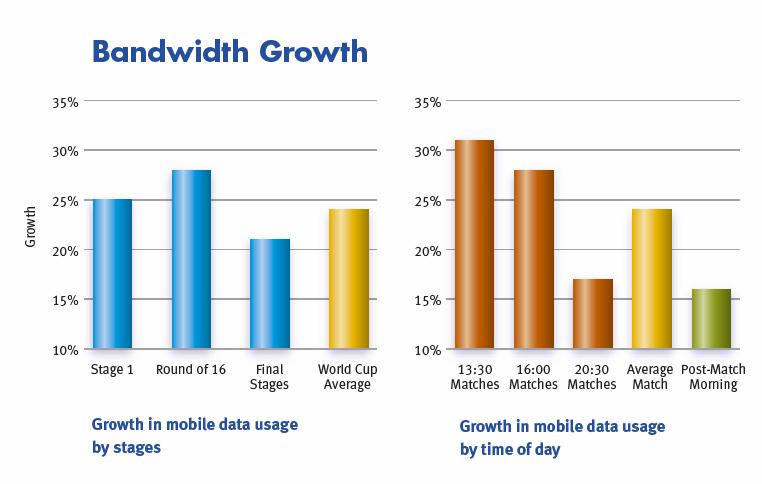 Mobile IP optimization business Allot have released their MobileTrends Global Mobile Broadband Traffic Report for the 2010 World Cup and it shows there was a huge worldwide desire from mobile users wanting to keep up to date with the scores, and wanting to watch videos of the football action.
Mobile IP optimization business Allot have released their MobileTrends Global Mobile Broadband Traffic Report for the 2010 World Cup and it shows there was a huge worldwide desire from mobile users wanting to keep up to date with the scores, and wanting to watch videos of the football action.
The key finding from the report is in the amount of bandwidth used during the games bandwidth usage increased by an average of 24% during match times, with the largest increase of 31% occurring during the lunchtime matches, closely followed by the afternoon matches (28%). This was contrasted with a smaller increase in bandwidth in the evenings (17%) where users opted to watch the action on TV rather than stream to their mobile, but still used their mobile to download additional information like stats and player information. Users also seemed to use their mobile in the mornings more, as Allot saw an average increase of 16% in overall bandwidth was recorded during the mornings (8am-12am) following the matches.
Web browsing increased dramatically during the World Cup matches with 35% growth. The growth in web
browsing occurred continuously in all matches, irrespective of whether the overall bandwidth rose or fell
during that specific match. Allot puts this increase down to traffic from mobile applications and the use of social media like Facebook and Twitter during the World Cup.
Video streaming experienced a relatively modest increase of 11%, indicating that video content was not
typically consumed in real time over mobile broadband networks. During morning hours (8am-12am), the
use of YouTube grew by 32%, greatly contributing to the 23% increase in video streaming that occurred
in post-match mornings. Allot attributes this rise to users repeatedly viewing key moments from the match and showing their friends eg Take a look at this video of Argentina playing an impromptu game of volleyball in Ghana’s goalmouth. Additionally YouTube bandwidth registered an average 14% decrease during evening matches, which seems to reconfirm the earlier finding that during certain matches, subscribers watched less video on their
mobile devices and concentrated more on watching the actual match.
Allot concludes that the World Cup didn’t replace the TV during the World Cup but instead created
a new category and a niche where they function alongside the big screen, enhancing the viewer experience by “offering additional information in real time, and providing the ability to watch replays at leisure and share them with friends.”


1 comment for “World Cup 2010 mobile trends”